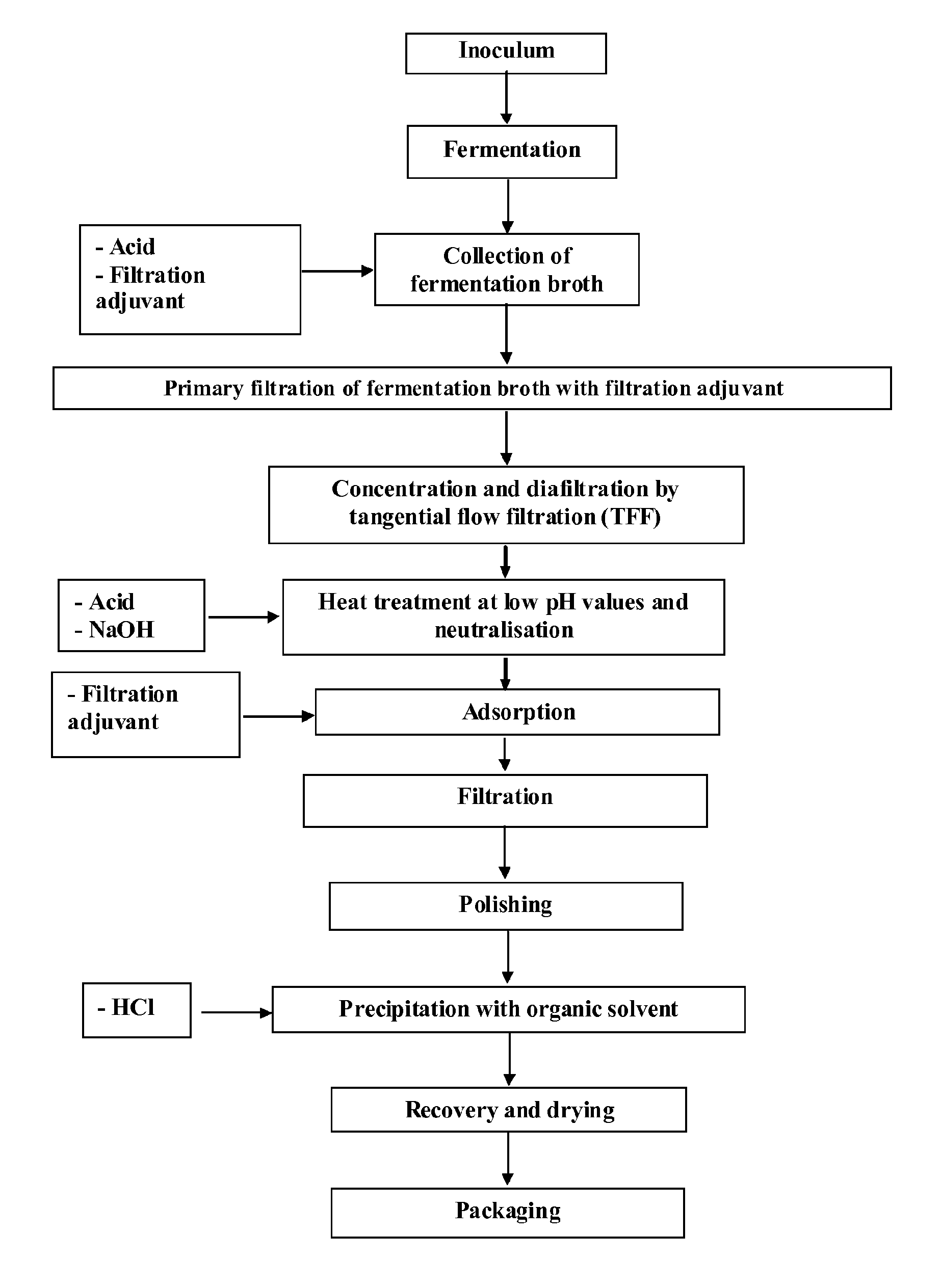Production of highly purified sodium hyaluronate (HANa) with controlled molecular weight
a technology of sodium hyaluronate and high purification rate, which is applied in the field of production of high purification rate sodium hyaluronate, can solve the problems of low yield, reduced quality, and high cost of extraction from rooster combs
- Summary
- Abstract
- Description
- Claims
- Application Information
AI Technical Summary
Benefits of technology
Problems solved by technology
Method used
Image
Examples
example
Selection of Bacteria for High-Yield Production
[0040]Streptococcus equi subsp. zooepidemicus CNCM 1-4645 (mutant strain deriving from wild-type strain DSM number 20727, deposited in the DSMZ Microbial Collection) is used as HANa producing bacterium: the micro-organism is stored in 20% (v / v) glycerol in a vial and frozen (T←70° C.).
[0041]The manufacturing process begins with thawing of a vial followed by streaking of the bacterial suspension in the plate on solid medium, and growth at 37° C. for 20-36 hours (Revitalisation Step). A colony taken from the plate is then resuspended in fresh culture medium in a test tube and incubated for 8-16 hours at 37° C. under stirring (100-300 rpm, Cell Expansion Step I). The test tube is then used as inoculum in two 5-liter Erlenmeyer flasks containing 2 liters of sterile culture medium. The flasks are incubated for 8-16 hours at 37° C. under stirring (100-300 rpm, Cell Expansion Step II). The cell suspension obtained is then used for inoculation....
PUM
| Property | Measurement | Unit |
|---|---|---|
| molecular weight | aaaaa | aaaaa |
| polydispersity | aaaaa | aaaaa |
| pressure | aaaaa | aaaaa |
Abstract
Description
Claims
Application Information
 Login to View More
Login to View More - R&D
- Intellectual Property
- Life Sciences
- Materials
- Tech Scout
- Unparalleled Data Quality
- Higher Quality Content
- 60% Fewer Hallucinations
Browse by: Latest US Patents, China's latest patents, Technical Efficacy Thesaurus, Application Domain, Technology Topic, Popular Technical Reports.
© 2025 PatSnap. All rights reserved.Legal|Privacy policy|Modern Slavery Act Transparency Statement|Sitemap|About US| Contact US: help@patsnap.com

